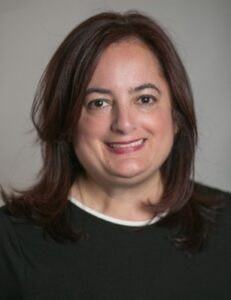Rare Community Profiles

Rare Community Profiles is a new Patient Worthy article series of long-form interviews featuring various stakeholders in the rare disease community, such as patients, their families, advocates, scientists, and more.
The Cost of Preventative Care in Chronic Illness and Rare Disease—and Why We Need to Talk About It
There’s no way to sugarcoat this: living with a rare disease or chronic illness can be incredibly expensive.
On average, it takes anywhere from 4-8 years to receive a rare disease diagnosis; this odyssey, which often encompasses several specialists, a variety of tests, and the ever-present insurance issues, can be extremely costly.
Then, diagnosis brings a new financial burden: treatments, travel, additional specialist care. In a 2019 study from the EveryLife Foundation, researchers determined that the economic burden of rare disease in the United States was nearly $1 trillion: $418 billion in direct medical costs, $437 billion in indirect costs, and $111 billion in non-medical and uncovered healthcare costs.
A 2021 study from the NIH also found that costs associated with a rare disease or chronic illness are 3-5x higher than people living without. This is similar to a study performed by Synchrony, Lifetime of Healthcare Costs in the U.S., which found that patients with chronic conditions can expect to pay more than $6,000 annually, or 5x as much as people without a chronic condition.
While preventive care is important to staying healthy and ensuring better outcomes, some people may avoid preventive care due to financial burdens.
Erin Gadhavi, SVP and General Manager, Wellness, at Synchrony—a company that aims to help people meet their healthcare finance needs through their main health and wellness solution, CareCredit—knows all about the costs of preventive care. In her discussion with Patient Worthy, Erin shared more about what preventive care is, barriers to care, and how Synchrony can help.
About Erin Gadhavi
Prior to joining Synchrony, Erin Gadhavi was founder and principal of a management consultancy firm that drove innovation and measurable impact for more than 15 years in the biotech, pharmaceutical, and financial services industries. She joined Synchrony in 2013 and has since held a variety of roles: first with the consumer banking team, then the strategy team (where she led strategy and initiatives for the health and wellness platform), and now as Senior Vice President and General Manager of Synchrony’s new wellness vertical. She explains that Synchrony’s CareCredit credit card began with a focus on dental care but has adopted a broader focus including core medical care, healthcare specialties, elective care and wellness.

Erin continues to be an active leader across multiple Synchrony diversity networks, including the company’s Hispanic Network and Women’s Network+ (WN+), promoting a diverse and inclusive culture. She was the Pacific chapter executive sponsor for the Hispanic Network, established the WN+ Chapter at the former Bridgewater, NJ site and served as the Global WN+ leader on culture. Today Erin is the Global WN+ Network leader for Synchrony, which includes more than 4,000 members.
The Costs of Preventive Care
Before we begin discussing the costs of preventive care, let’s first discuss what this term means. Preventive care refers to routine healthcare that can help prevent diseases or other health issues. For example, the U.S. Department of Health & Human Services explains that preventive care may include:
- Patient counseling on a variety of topics
- Regular checkups to manage our health
- Cancer screenings
- Blood pressure, cholesterol, and diabetes tests
- Routine vaccinations
- Well-woman visits
For many individuals, preventive care is covered by insurance as part of the premiums. But, says Erin:
“Healthcare consumers can be responsible for out-of-pocket expenses, coinsurance, deductibles, and other costs.”
Barriers to Care
Preventive care can identify potential issues or problems before they become more complicated. One issue is that patients must stay on top of necessary appointments—and that there are significant costs associated with those appointments within the rare disease and chronic illness space. Erin shares:
“The cost of preventive care is a barrier, especially with chronic conditions. It can be a burden just to coordinate appointments across multiple specialty providers each year, let alone pay for them all.”
Access to care—another barrier—goes together with the financial burden, Erin says. Are people able to find the right specialty providers on their healthcare journeys? Can they find timely appointments and follow-ups? Do people have appropriate access to care on a regional level?
Answering these questions can determine where unmet needs exist. For example, consider specialty pharmaceutical needs like infusions that people need as part of their treatment plan. If they don’t have access to that regionally, they may need to travel for care, an associated financial burden. For those unable to travel, they may require more frequent visits to their local doctors for additional care, which would constitute a financial burden as well. Says Erin:
“At Synchrony, we’re on a mission to alleviate those burdens. We believe that people should be able to pay for the care that they want and need and the services that make them feel better. Our goal is to reach a point where patients can pursue the treatment plan they need at the right time with peace of mind.”
How Synchrony Can Help
Initially, Synchrony began exploring the financial burden of preventive care in relation to chronic illness due to two main factors:
- The COVID-19 pandemic, which Erin says quickly taught everyone how preventive care can impact overall health, which can contribute to outcomes.
- The advent of high-deductible health plans, in which patients share the financial burden.
After discussing this as a topline conversation, the Synchrony team recognized that people and families affected by rare disease and chronic illness need stronger financial advocates, options, and support to make the best health investments for themselves. One way that Synchrony contributes to this is through CareCredit, a health credit card. Full disclosure—I have been using CareCredit for years throughout my own health journey; it has been very helpful in relieving some of the financial burden I’ve faced, especially given the deferred interest feature (i.e. you don’t have to pay interest if you pay the costs back in a given time period, such as 6, 12, or 18 months). Erin explains:
“We offer a full suite of promotional financing options and now have more than twelve million cardholders who use CareCredit as a tool to finance care. CareCredit can be used for care that isn’t covered by insurance, deductibles, copays, coinsurance, wellness services. Through this tool, we really hope to provide better options for people to plan, budget, and receive top-notch care. Synchrony holds true to our mission of empowering patients on their health journeys.”
Additional Advice
Outside of CareCredit, Erin has some other avenues for those within this community to take control of their healthcare journeys and reduce the financial burden. She says:
“We’re so conditioned to think about saving for lifetime milestones, such as buying a house or starting a family. We should think about our future health in the same way. For many, it’s unfortunately not a matter of “if” but “when” we get diagnosed with a medical condition or chronic disease, requiring a large investment of both money and time. By saving early for future health needs, you’ll give yourself the power to choose the treatments and providers you want, without feeling financially burdened. Easy ways to start saving include opening a high-yield savings account or enrolling in an employee-sponsored flexible spending or healthcare savings account to set aside tax-free dollars for medical expenses.”
As we move towards the future, both Erin and Patient Worthy hope to see a world where people with rare and chronic illnesses have the tools and access to receive necessary care.






